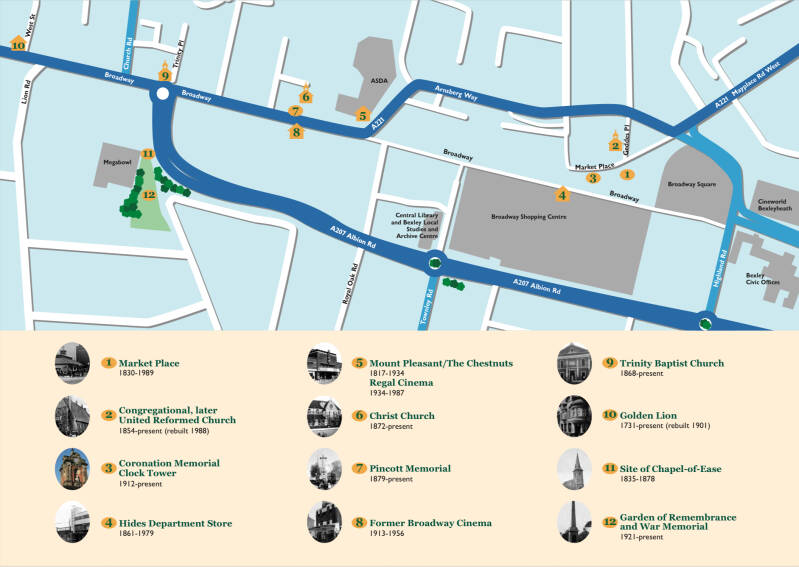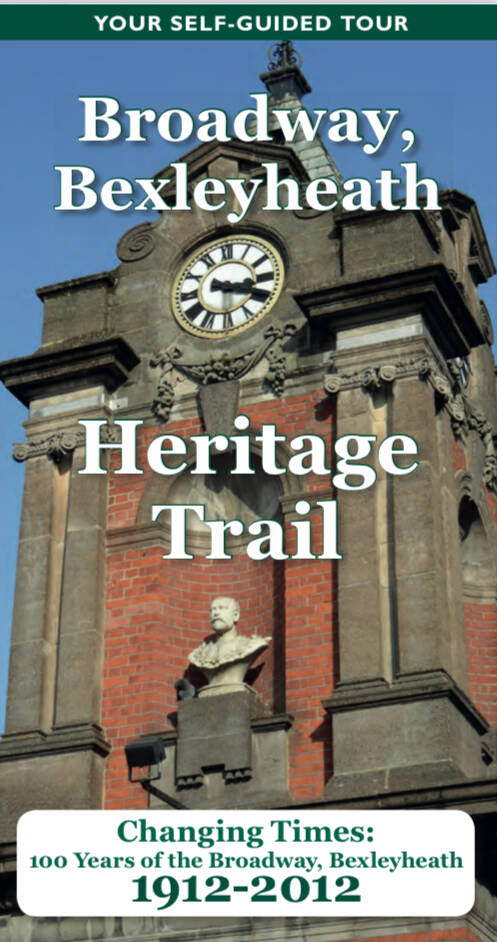

BEXLEYHEATH
Geography, demographics
a population of approximately 15,600 in 2021[1] and is 12 miles (19 kilometres) southeast of Charing Cross. It is identified in the London Plan as one of 35 major centres in London.[2]
the largest ethnic group is White, accounting for approximately 78% of the population, followed by Asian/Asian British at around 11%, according to the 2021 Census. This shows a higher proportion of White residents than the London average
A bit of history to start with…
For most of its history, Bexley heath was heath land. The Romans built a road through the heath, Watling Street, which connected Londinium (London) to Dubris (Dover). This Roman road still marks the spine of Bexley new town.
In the early 19th century, Bexley heath was a broad rough pasture and scrubland with few buildings. Its windmill stood to the north east, where Erith and Mayplace Roads now meet.[5]: 11 In 1766 Sir John Boyd had Danson House built in his enclosed land ("park").[6]
In 1814 most of the rest of what was Bexley heath, north of Bexley, became enclosed (privatised) with a fund of money given in compensation to trustees for the poor of the parish.[5]: 4
In 1859 architect Philip Webb designed Red House for artist, reforming designer and socialist William Morris on the western edge of the heath, in the hamlet of Upton
Bexleyheath's parish church, Christ Church, dates from 1841; and the ecclesiastical parish from 1866; the building of the current church finished in 1877
Alfred Bean, railway engineer and one-time owner of Danson House, furthered the development of Bexleyheath as a London suburb by championing the Bexleyheath Line in the 1880s to support the growth of estates around Danson Park.
The town centre shops and road layout were redeveloped in the 1980s and 1990s. The latter decade saw the pedestrianisation of the road adjacent to the shopping centre having built two minor bypass roads, Arnsburg Way and Albion Way.
In May 2009 a major redevelopment scheme was approved by the local council following public consultation. This involved the redevelopment of the Bexley council buildings. The magistrates' court was to move to a new building where the library stands, which would be incorporated into the new development of 300 new homes. The work did not proceed as the shopping centre was sold.
In work commencing 2012, the Borough's Civic Offices were converted from the former main office of The Woolwich, which had been vacant seven years.[10] For the resultant vacant site in June 2018, housebuilder Bellway was approved to build 518 homes, of which 110 affordable. The development will include Bexleyheath's tallest building (13 storeys), public realm improvements and offices/retail.[11

MARKET PLACE
CONGRATIONAL, later UNITED REFORMED Church
(King George V) CORONATION MEMORIAL CLOCK TOWER
One hundred years after the Clock Tower was built to commemorate the coronation of King George V, Bexleyheath celebrated the Diamond Jubilee of Queen Elizabeth II.

